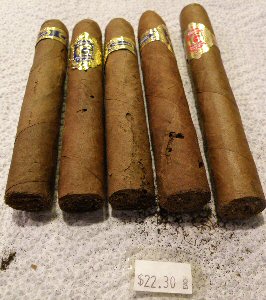
I dropped everything, pulled out the drawer. After an hour or so of careful evaluation of the cigars, I found 5 other cigars, all Graycliffs that had been raped and pillaged by the evil marauding insects. Worse still is that I came face to face with the little criminals. They were pretty brazen. A few of them just sitting on the sides of the drawer, surveying the vast tobacco tobacco landscape. I happy to say that I gave them a close look at my thumbprint.
After I quarantined all the cigars in plastic I wiped down the cedar drawer with distilled water to remove any remains of bugs and dust. (You have to be very, very careful of that dust. A pile of tobacco dust to us is a honeymoon suite to an amorous tobacco beetle.)
I was thinking of leaving it at that. Infected cigars gone. Beetles eradicated. Stogie citizens of the United Sticks of Brian’s Humidor (USBH, for short) were once again safe. From beetles anyway. All citizen stogies still faced the danger of small, controlled burns. But then it occurred to me, this is an opportunity to speak with the manufacturer about this issue. These are $20+ cigars, after all. There should be someone available for me to talk to about this.
I started out by sending the following message to Graycliff, using their web contact form:
Hi, I was wondering what sort of measures you take to prevent beetles in your cigars. Do you freeze your cigars like many manufacturers do?
The reason I’m writing is that it appears a few of the little guys made it through whatever measures you take to elimate them. I was VERY surprised this morning to discover a break out of beetles in the Graycliff drawer of my humidor. After some careful analysis, it appears the source of the beetles was in my selection of blue label (professionale) sticks, and spread into a red label cigar or two. Needless to say, I am a little disappointed. Fortunately only six cigars had to be thown away. I’m moving the remaining sticks to a quarantine humidor for now.
I just thought you should be aware of this. The only other cigar I’ve had a beetle problem with was an inexpensive bundled Dominican smoke.
Regards,
Brian HewittP.S. If this gets through, it appears that you have a bug with your feedback form.
But the contact form errored out when I tried to send it. I tried again, but no dice. It’s lucky I wrote my message in notepad, because having to rewrite my questions would have just added insult to injury.
Since I couldn’t use the web-based contact forum, I decided to call Graycliff directly. I was a little surprised to find their direct line busy, so I tried again with the 1-800 number. Wow, two strikes! This time I got through and asked to be forwarded to someone who could speak with me about the cigars.
A lady with a great island accent answered the phone. I told her about the breakout of beatles in my Graycliff stash and asked her what measures Graycliff takes to prevent beetles in their cigars. Do they freeze their cigars before they ship? Do they use any sort of pesticide on the tobacco? She told me they don’t use pesticide. The only thing they do is ship their cigars in a freezer container to Baton Rouge where they are distributed.
I then asked her if they get a lot of calls regarding beetles. Initially she responds no, but then qualifies that they do get calls from warmer places like California during the summer. The key here is heat. Heat is what causes the bugs to hatch and start eating. She recommends to people who call that they do not freeze the cigars, saying that freezing the beetles can cause damage to the smokes. That seemed a bit contradictory, given they ship the cigars frozen, but I didn’t challenge her on the point.
What she tells people who call about beetles is that they should immediately throw out any cigars that have beetle damage and put the rest of the cigars from the box in tupperware in the bottom of the refrigerator until the end of summer. Of course, being careful to keep this container away from food items like onions and other produce with strong aromas. This advice seems to be a little suspect to me, as the cool temperature will not kill the eggs and even the most humid part of the refrigerator will considerably dry out your smokes if left there very long. Perhaps the idea is that this approach delays the problem long enough for you to smoke the cigars. Problem resolved by fire.
Of course, the 800-pound gorilla in the room (or on the phone in this case) was whether or not my smokes would be replaced. I decided not to ask for a replacement, rather waiting to see if an offer would be made. My rationale was that when I purchased these cigars, there was no obvious indication of bugs, so their germination had to do with my storage conditions. (I have had temperature problems in the past.) In my opinion, they didn’t owe me a replacement. However, it would make good business sense for them to make the offer. As anyone in customer service knows, you’re chance to score real points with your customer is when they come to you with a problem. Address it the issue well, and have the power to make an unhappy customer both happy and loyal.
The offer to replace the cigars was never made. Maybe it was because I didn’t sound angry on the phone (I wasn’t), or maybe they get calls all the time from people lying to get free cigars. I was a little disappointed, I have to admit. I don’t need replacements and probably wouldn’t have accepted them, but I would have appreciated the offer. I mean, hey, these are $20 cigars after all!
You might be wondering why I didn’t contact the retailer. In this particular case, I know that the cigar that seemed to be the epicenter of the beetle party was purchased from a cigar shop that has since changed ownership. Even if they wanted to generously replace any of my cigars, they couldn’t. They don’t carry Graycliff.
So what did I do to address the problem? I’m trying a multi-stage freezing process I’ve read about in the past. My plan is to put my stogies in the fridge for a day or so, before moving them into the freezer for around a week. And then transition them back out to the fridge before returning them to normal, though isolated, humidor storage.
So what, if anything have we learned? I’ll leave you, dear Stogie Review reader, with a few pointers for avoiding the evils of beetles.
- Monitor and regulate your humidor temperate carefully.
- Act quickly if you think you have a problem.
- Don’t try to keep or rescue a cigar with beetle damage.
- Quarantine all smokes that were in direct contact with the beetle-gnawed cigars. Consider freezing them to ensure safety.
- Clean up that tobacco dust. That’s beetle breeding territory.
- Per my conversation with lady at Graycliff and my past experience, there may be a slightly higher risk of beetles with Graycliff cigars. I’m not going to advise against buying them, I’d just recommend you be careful in where and how you store them.


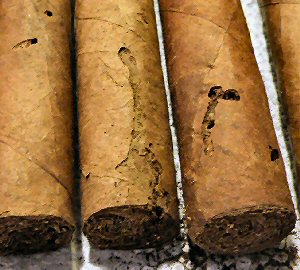
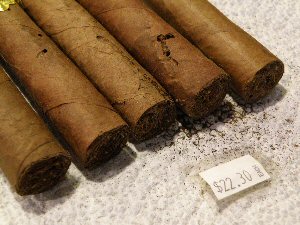
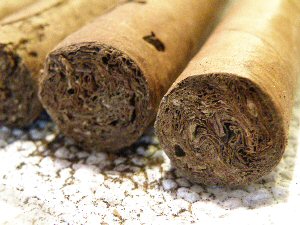
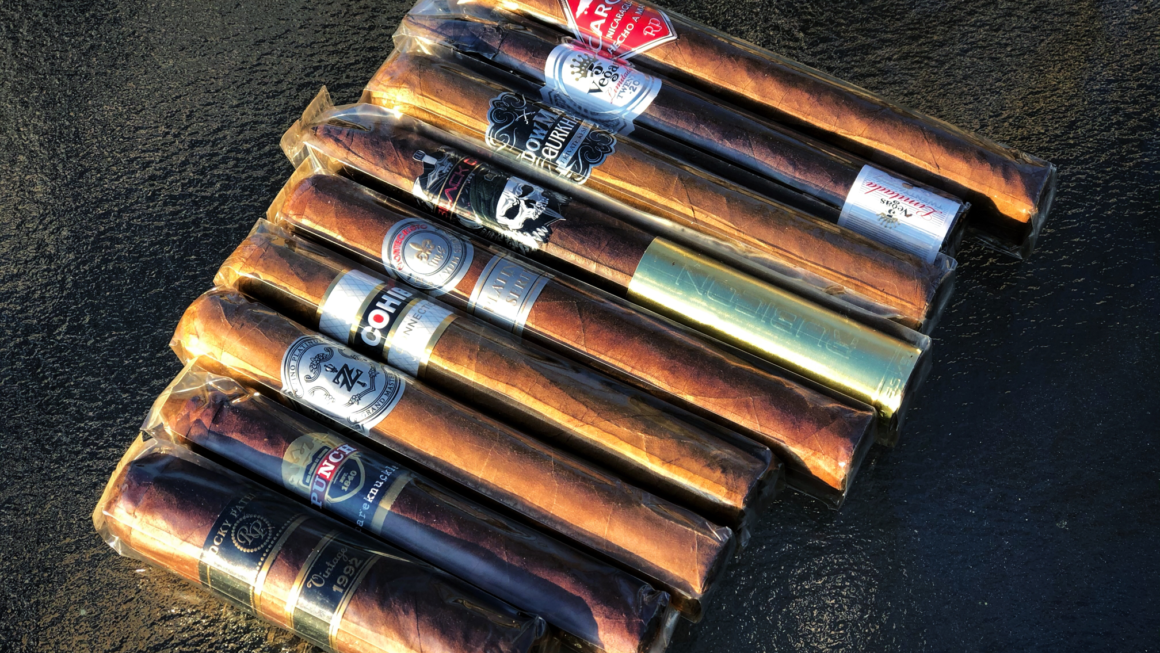
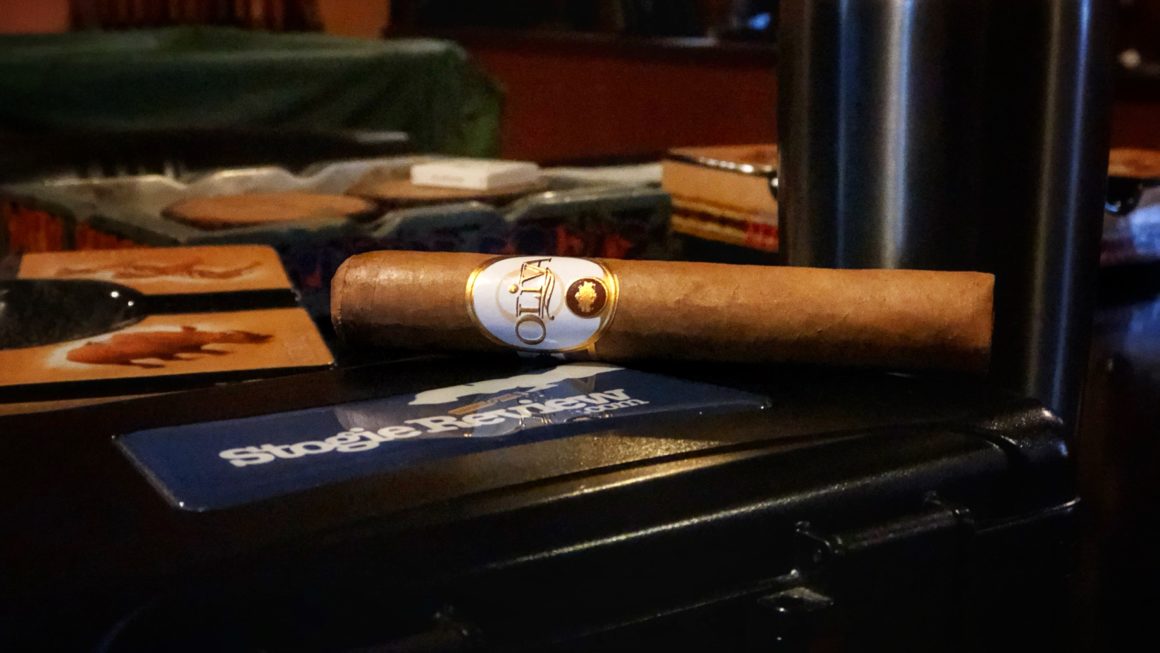
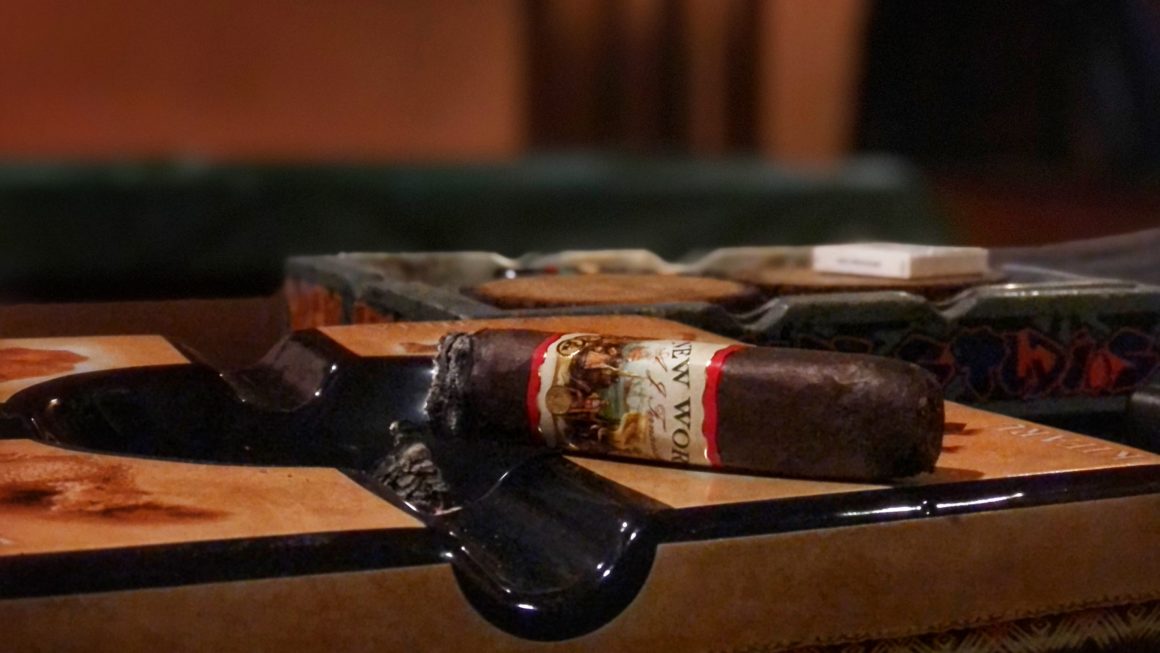
Whoa! I’m going to annex the Graycliffs into their own humi. Thanks for the informative post. Now you’ve got me buggin out.
Sorry to hear the news Brian, an offer of replacement from Graycliff would of been nice. Personally, I won’t buy Graycliff cigars, they are way overpriced in my opinion and their quality is hit or miss. I know they are priced high because of Bahamas import tobacco taxes and the fact they are boutique but the cigars just aren’t good enough to justify the huge premium, again…in my humble opinion.
I had issues with some Alec Bradley Tempus cigars – horrible burn, suspect construction – I emailed Alan
Rubin directly from the website. I received an answer within an hour from Mr. Rubin. He researched the problem, figured it out and informed me of the problem. He even passed the comments onto to his plant managers and Sales guys.
I didn’t ask for replacements and no offer was made – maybe I should have asked. I was impressed the CEO responded directly.
The local shop were pricks and didn’t take back the cigars – I no longer shop there. Still hesitant to buy the Tempus and another local store owner relayed to me that his customers love the Tempus but constantly have to relight.
Anyway – way off topic, sorry – the Graycliff answer sounds suspect and they should have offered a replacement. The cigar business is such a huge word-of-mouth industryy – both negative and positive reactions can reverberate among cigar lovers.
Whoa, nasty lil buggers. I had a beetle problem with some CI Anniversary cigars. Nailed two of them but I caught it early and actually saw the beetles on the wrapper of the cigars.
Because I live in CA, my house got over 80 degrees and boom, beetles. Ok, bought a coolidor large enough to store my cigars. I now keep them around 65 degrees F. I have a room temp humidor that I move cigars to before smoking them. Holds about 60 cigars if packed. I prefer room temp cigars to cooled off ones.
One question though, I thought that cigars that were stored for 90 days in 65 degree or cooler weather had all the eggs practically eliminated? I’m sure some statistically can survive, but I thought it significantly reduced a possibility of an occurrence? Sounds like a good upcoming cigar question/discovery process 🙂
Dave
The only beetle problems I have had were with Graycliff also. It was the G2 and the Crystal. They both had holes in them when I got them. I removed the band from the G2 and it looked like a trench had been dug in the cigar. Maybe beetles were re-enacting some WW2 battle or something.
Luckily I’ve only had one beetle experience. I received some sticks in a trade and noticed that one of them had a small hole through the wrapper and the cello. Needless to say I threw the stick out and kept the others in their own seperate bag just in case.
So I guess that’s a lesson for all you kids out there. When trading cigars (especially with people from warmer climates) you should always keep the sticks seperated for a while and keep an eye on them before mixing them with your other stuff.
Tell me when the funeral is so I can start looking for plane tickets now.
dude, thats just wrong…. after seeing this kind of damage I am suddenly stricken with a strong desire to inspect every cigar in my collection
Hey Brian,
I feel your pain. Since I live in California, I have to resort putting boxes of cigars (with Humidipacks) inside Avanti Thermoelectric wine coolers, which keeps the temperature at a constant 68 degrees. I kinda have too since the summer temperatures where I live, stays at a 100+ degrees. Perfect for F-ing beetles to hatch!!!
I went through every cigar last night – no beetles. Graycliff is overrated – too much $ for too little taste.
Brian, that is such a travesty bro. Regardless of what people think of the value of Graycliff cigars, they do cost a pretty penny and I would have figured that their customer service would have been MUCH, MUCH better than that. An offer of a replacement set of cigars was certainly NOT out of the question and yet they balked. Their reputation is certainly tarnished in my eyes.
CD
damn those bastards!
good pics though!
You can smoke em like a Piccolo even with that many beetle holes. Well maybe the trenched out one there would need some help from your corn cob pipe.
sorry for your loss. I just picked up (20) Grayclifts on auction, now I just went thru my stash thank God nadda. I agree W/ all, good customer service is key.
I was just wondering, is the reason she told you not to refreeze the cigars have anything to do with freezer burn?
Found out the hard way why you cant refreeze ribeye’s.
so lemme get this straight, I MAY be smoking insect larvae??!!!!!
Yep, although they’re likely dead.
oh, they’re dead…..that’s a relief. : \
Am pretty sure there’s insect larva in most/all cigars that’s either dormant or dead. Am pretty sure most folks prefer dormant larva smoke over insecticide/poison which seem to be the only two options.
Just goes to show how little some companies think of their lifeblood – namely their customer base. It’s also interesting that no one from Graycliff has ever responded to this post. They almost certainly would have to have been made aware of it.
Suffice to say that they will never get my business, unless they change their attitude.
not get carried away by the comments or photos I personally work for them and think they are not as unquestionably a good cigar.
for like the colors
Thank you.
I too have experienced cigar beetles. It is something you hope to catch early in a sequestered way to be sure. Perhaps some of you remember about six or so years ago there were actually three Cohiba brand marks on the market. The obvious original from Cuba, the true licensed one, made in Honduras I believe, for the U.S. market, and an opportunistic one patterned exactly from the Cuban one in banding, available sizes, and packaging clearly marked as being produced in Nicaragua for what I think was a Miami based distributor. Anyway, I was buying these “Cuban Clones” from a New York wholesaler and they were darn good smokes at a very reasonable cost. That is until I received a shipment with several that were beetle infested. Fortunately they were kept in their box and I noticed it very early on after opening the box. My wholesaler gave me full credit and I waited a little while with the intentions of trying them again. Again never came, perhaps thankfully if the problem was not eradicated, due to a law suit made by the U.S. trademark owner. Though, as stated, even though these cigars had a very decent flavor I would venture to guess a maker having no qualms as to “hijacking” the label may take shortcuts somewhere in the process of getting them out the door with expeditiousness. Hey, it happens and I was just thankful I did not contaminate my other boxes resting in a large stand-up humidor. Since then I’ve had years of no problems, even with the mention CI Anniversary sticks of which I’ve had at least three boxes of. My advice is to get them out and freeze them and then return or destroy the offenders. Take a small loss to avoid a bigger one.
I went to the Graycliff factory in Nassau, Bahamas in March
2013. Great place & good times. Tonight I reached for a
cigar that was in a humidor that had 3 Graycliffs in it . Two of
the Graycliffs had cigar bug holes- the Blue label cigars. I even
saw one live bug! Reading the previous thread makes me feel I am
not alone. Best regards. Bill